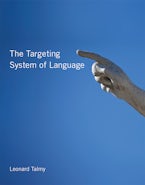Motivated by the remarkable fluidity of memory the way in which items are pulled spontaneously and effortlessly from our memory by vague similarities to what is currently occupying our attention Sparse Distributed Memory presents a mathematically elegant theory of human long term memory.The book, which is self contained, begins with background material from mathematics, computers, and neurophysiology; this is followed by a step by step development of the memory model. The concluding chapter describes an autonomous system that builds from experience an internal model of the world and bases its operation on that internal model. Close attention is paid to the engineering of the memory, including comparisons to ordinary computer memories.Sparse Distributed Memory provides an overall perspective on neural systems. The model it describes can aid in understanding human memory and learning, and a system based on it sheds light on outstanding problems in philosophy and artificial intelligence. Applications of the memory are expected to be found in the creation of adaptive systems for signal processing, speech, vision, motor control, and (in general) robots. Perhaps the most exciting aspect of the memory, in its implications for research in neural networks, is that its realization with neuronlike components resembles the cortex of the cerebellum.
A Bradford Book.












